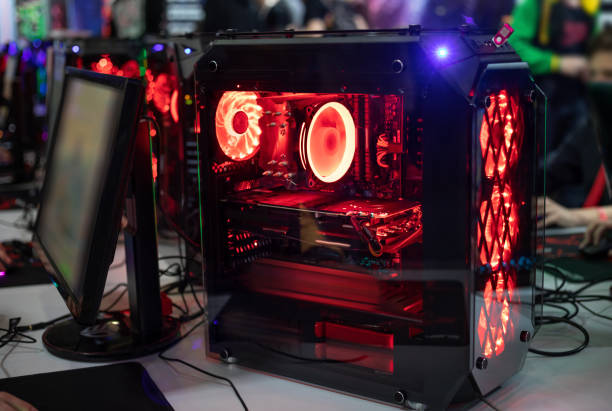If you don’t need to watch how much you spend on a gaming PC, you can pretty much game HYPERLINK “https://www.youtube.com/watch?v=SZK04rWVIW4″in ultra-settings HYPERLINK “https://www.youtube.com/watch?v=SZK04rWVIW4″at 8K resolution and still get close to 60fps average! On the other hand, since most people do actually care about how much they are paying for their next gaming PC, it’s important to be crafty. It’s a market where desktop GPUs are openly sold above their MRP, and they still go out of stock before gamers get a chance to overpay for them.
Thanks to crypto mining and some very shady pricing strategies adopted by manufacturers and retailers alike, gamers must stay well informed and updated about crafty builds and good deals. Let’s discuss a few key points that will help you find the best gaming PC you can possibly buy without exceeding your own budget.
Go with Ryzen
Intel was lagging far behind AMD in the CPU department for several years, but Intel’s 12th generation CPUs have finally managed to catch up and even beat some of AMD’s offerings. However, AMD is still winning in market sales because most Ryzen CPUs offer better performance, despite carrying a lower price tag. For example, the highly acclaimed Lenovo Ryzen 7 gaming PCs are comparatively cheaper than their own Core-i7 gaming PCs from the same generation, and they are faster!
Pick a Resolution
The impact of the resolution is misunderstood because marketing around them can be misleading. The higher the resolution, the more pixels your gaming PC will need to push on screen, which means that gaming in high resolution requires more powerful and expensive hardware to support it. To get a better grasp of the concept, look at the following chart for some of the commonly used, standard 16:9 resolutions:
- 1280 x 720 (720p, HD) = 921,600 (0.92 million) pixels
- 1366 x 768 = 1,049,088 pixels (1.04 million) pixels
- 1920 x 1080 (1080p, FHD) = 2,073,600 (2.07 million) pixels
- 2560 x 1440 (1,440p, QHD) = 3,686,400 (3.68 million) pixels
- 3840 x 2160 (4K, UHD) = 8,294,400 (8.29 million) pixels
When you play Red Dead Redemption 2 (RDR2) at 1080p ultra, your gaming laptop or desktop needs to constantly render about 1.04 million pixels on screen in ultra-graphical quality, which is a tough ask. A good gaming PC should be able to handle that and run RDR2 at 30 – 40fps on an average. However, when you run the same game at 1,440p ultra, the PC now needs to render almost double as many pixels (2.07 million). One can only imagine what will happen if the same hardware is forced to push 8.29 million pixels at 4K! The bottom line is that your gaming laptop’s internal configurations (CPU + GPU + RAM) must match the display’s native resolution, or you are paying for something that you will never be able to use.
Gaming Laptops Over Desktops?
Gone are the days when assembling your own desktop PC meant that you would be building a more powerful computer than any gaming laptop within the price range. Due to crypto mining, high pricing, and low availability, there is now a stark difference in the price of desktop and laptop components, with the former costing a lot more than it should.
As a complete, preassembled gaming PC which comes with its own battery and monitor, modern gaming laptops beat modern gaming desktops as far as value for money is concerned. Note that if you choose your gaming laptop well, the performance difference between the laptop and a comparable desktop will not be that big. The Lenovo Legion 7 and Legion 5 Pro, as well as the ASUS ROG Zephyrus G15 prove that point.









